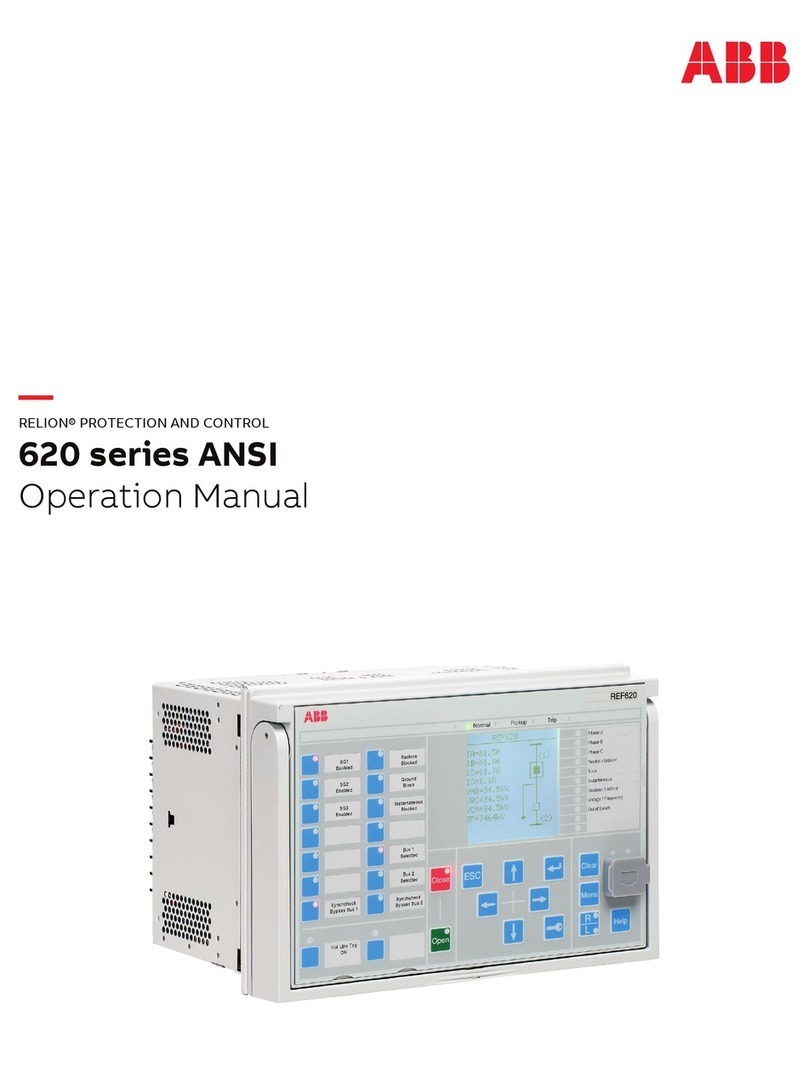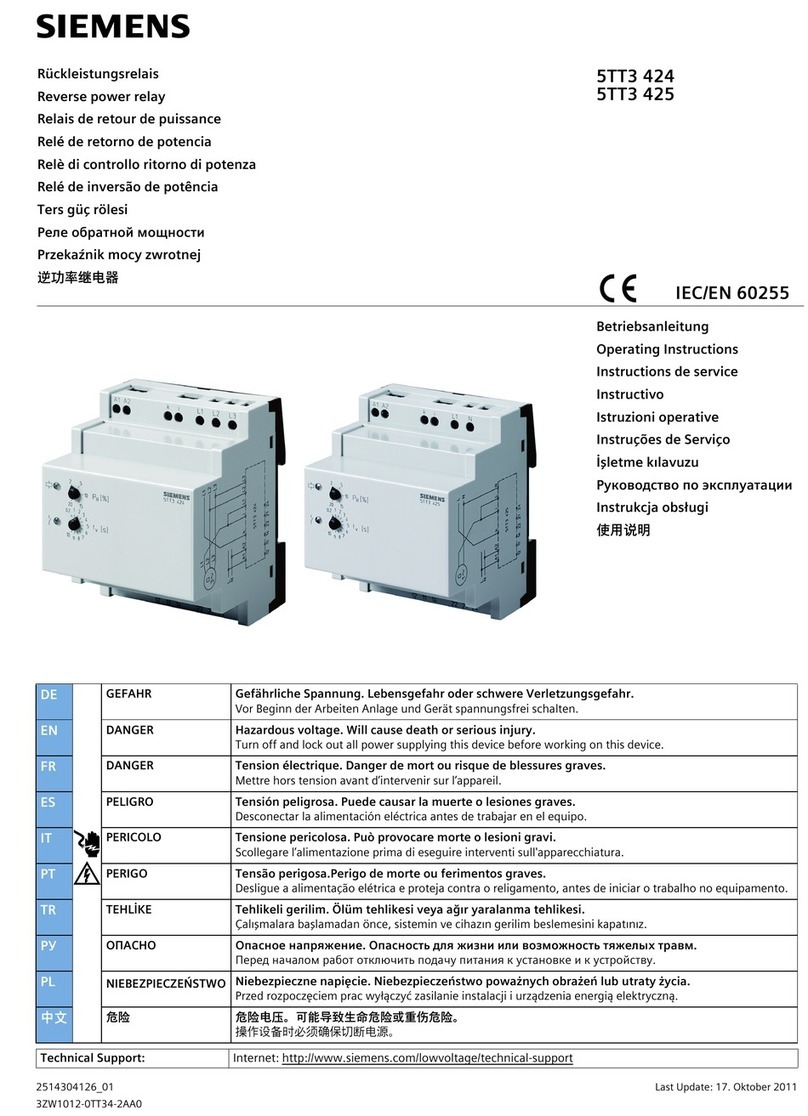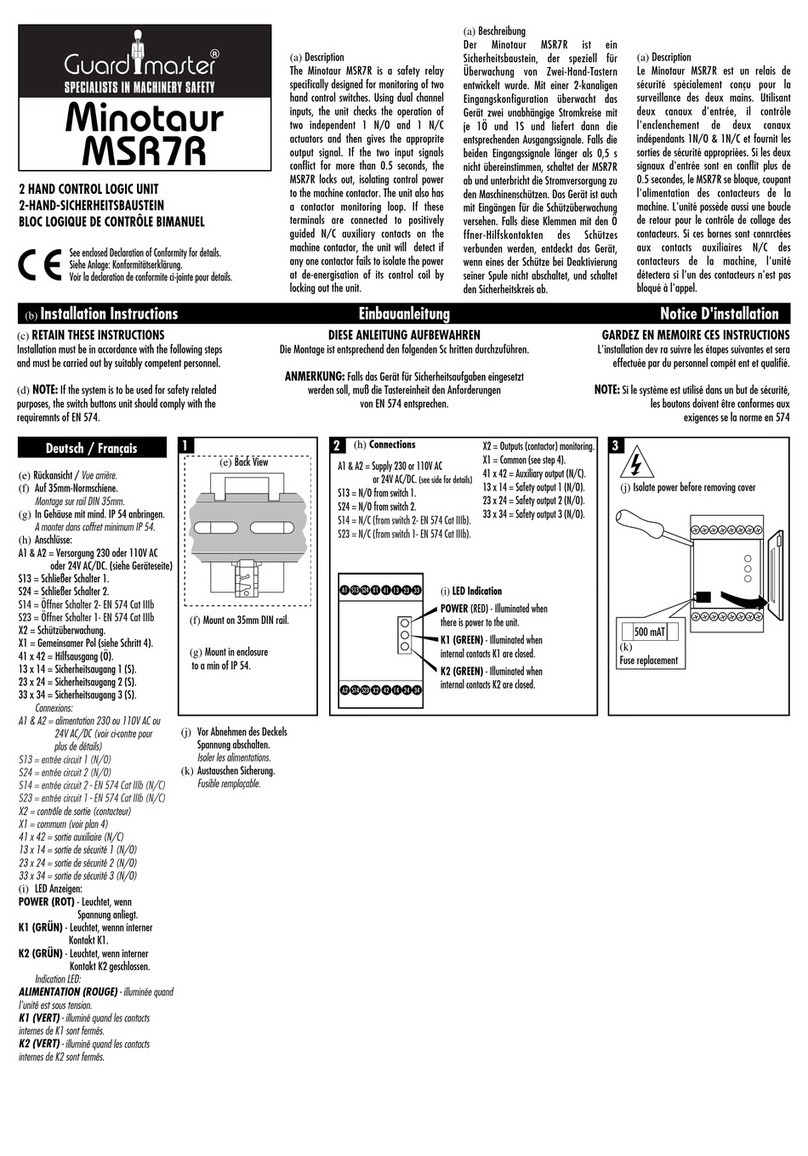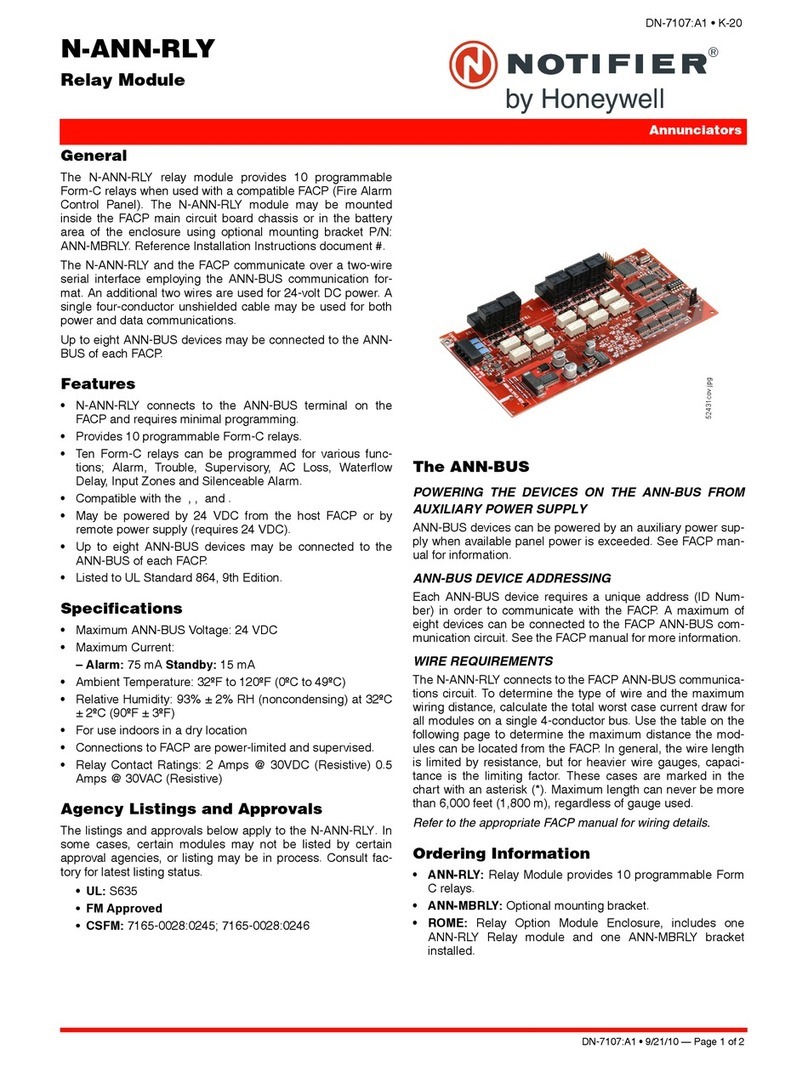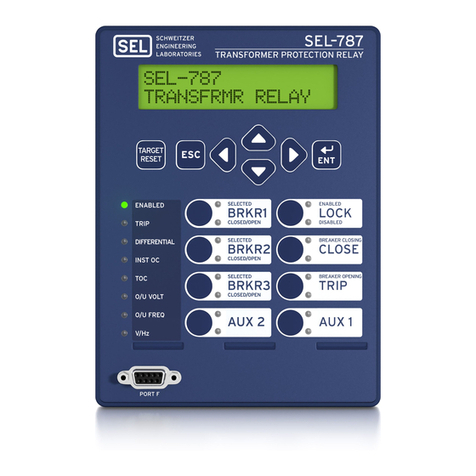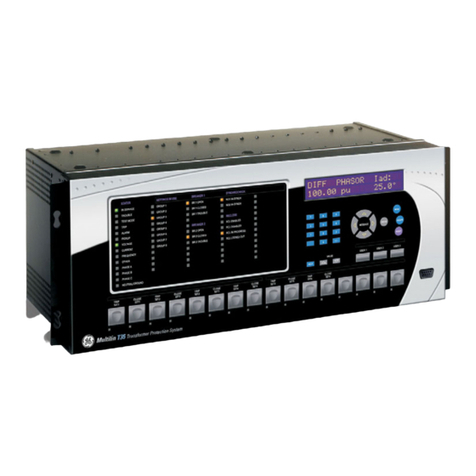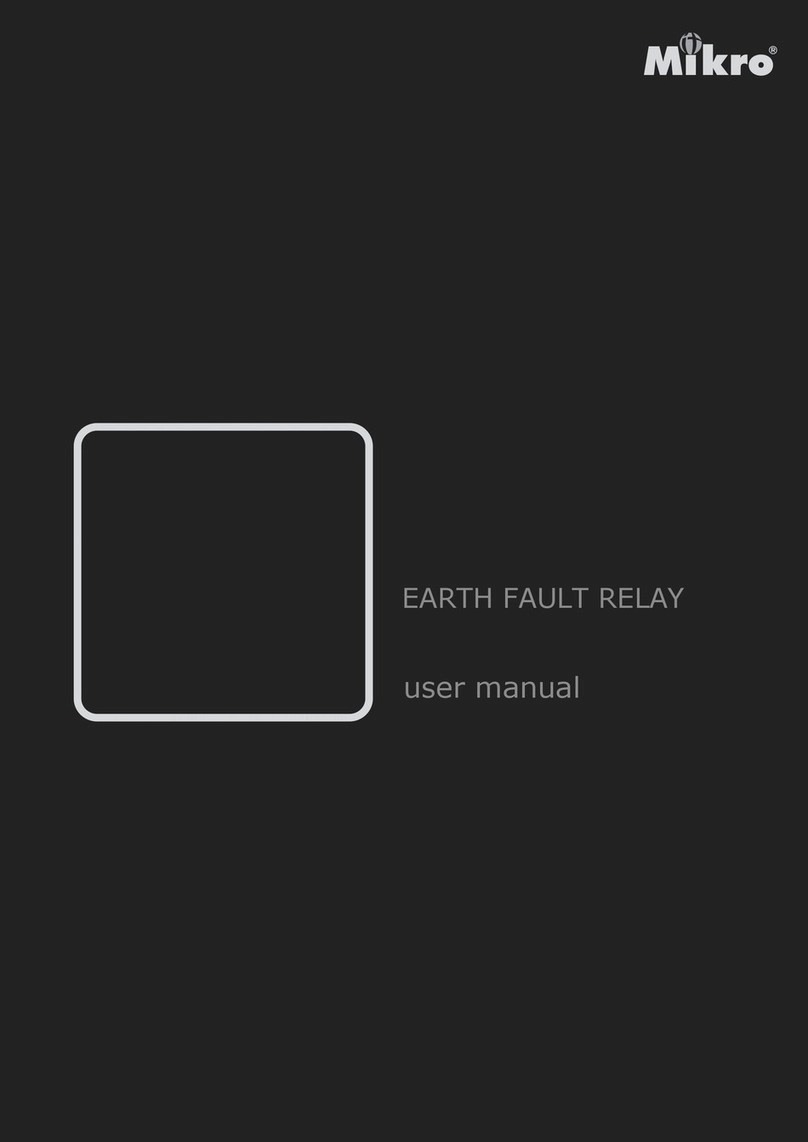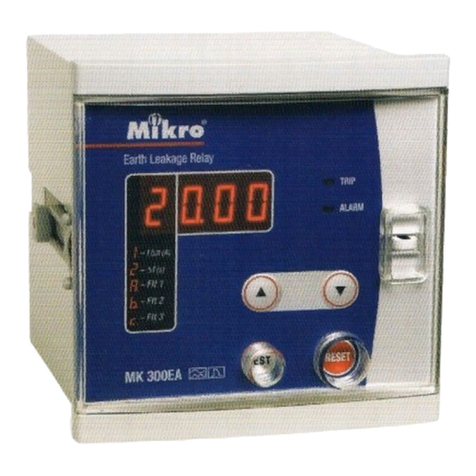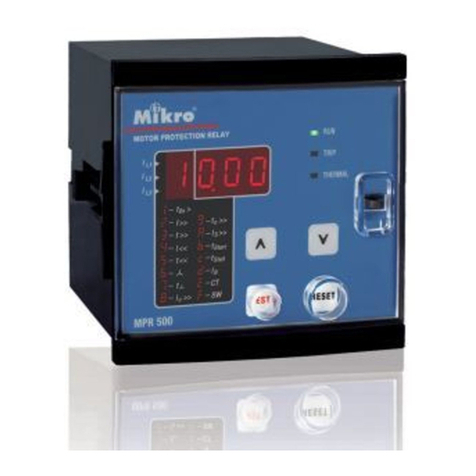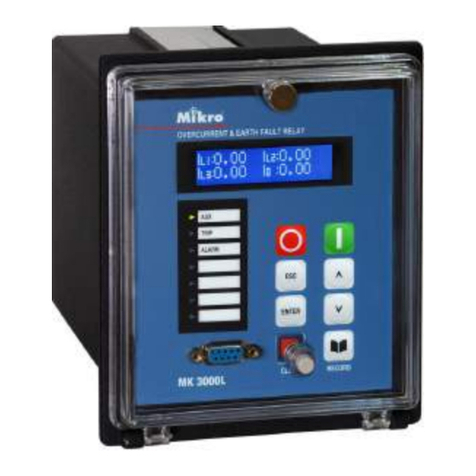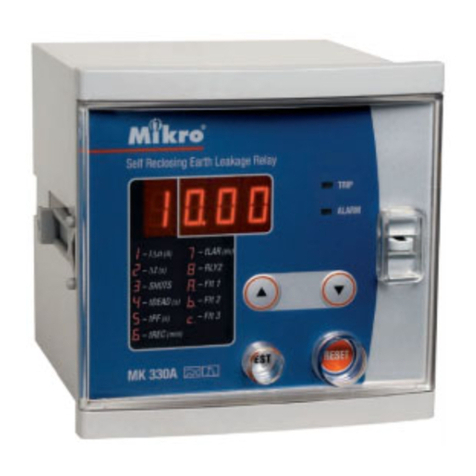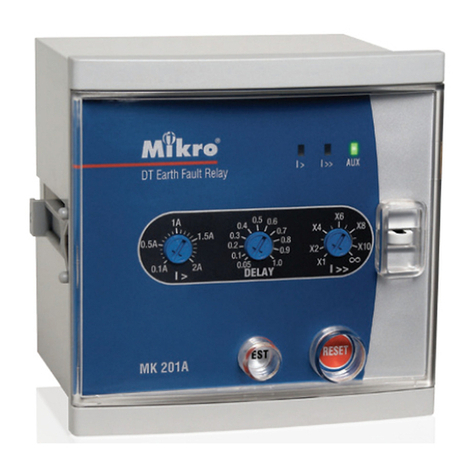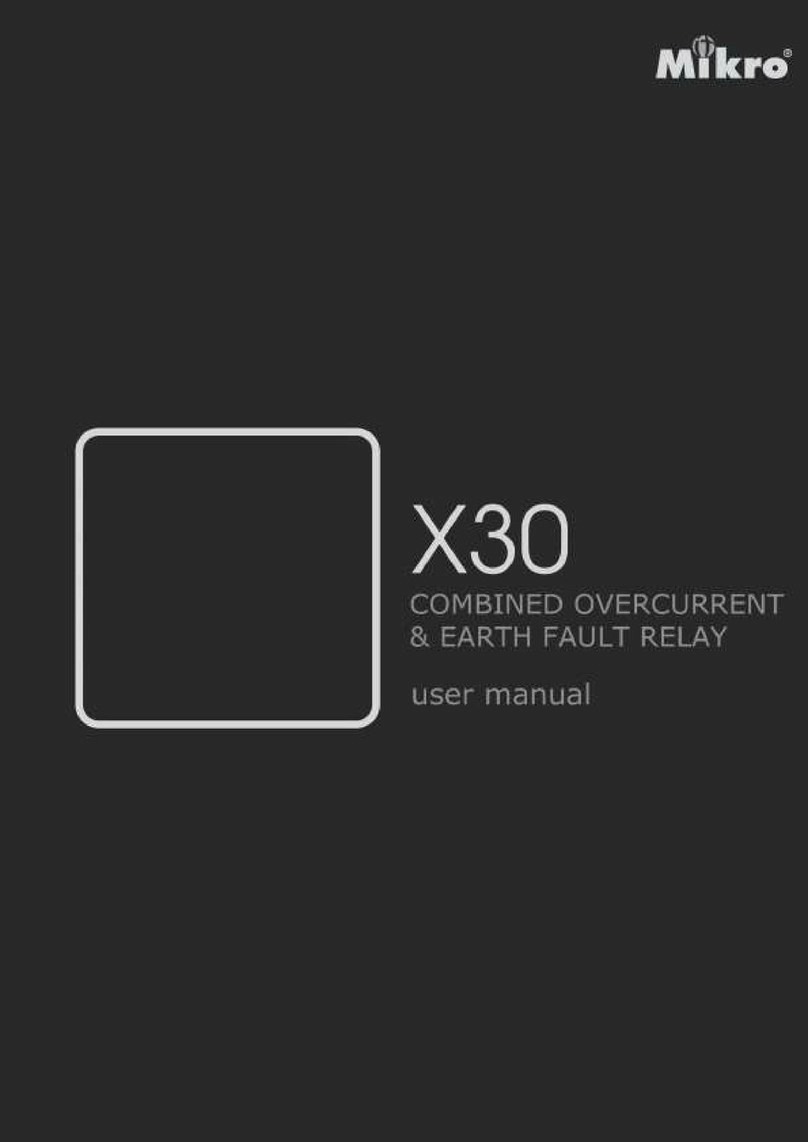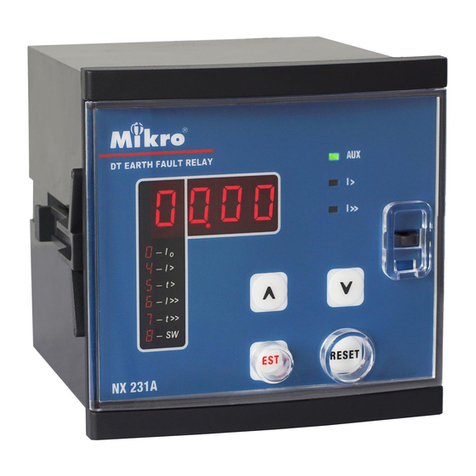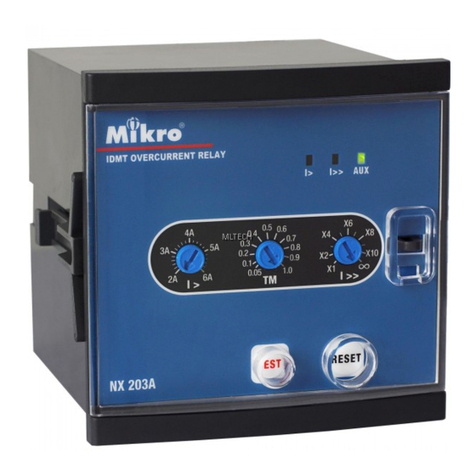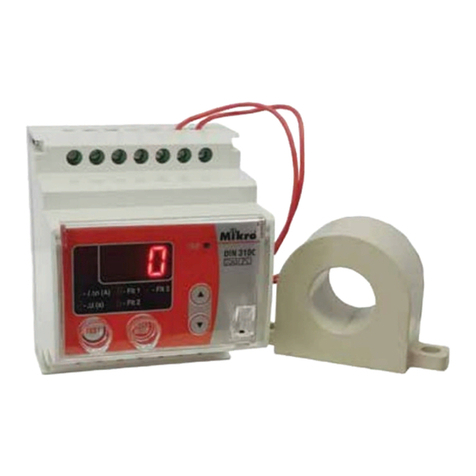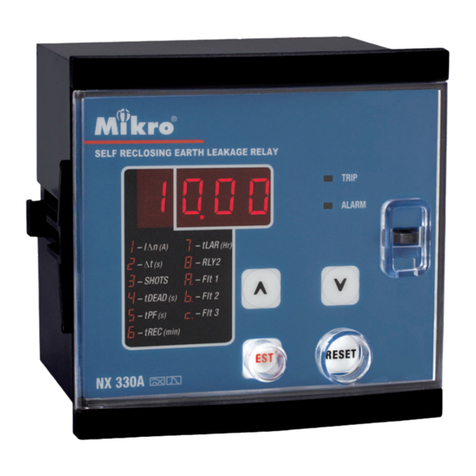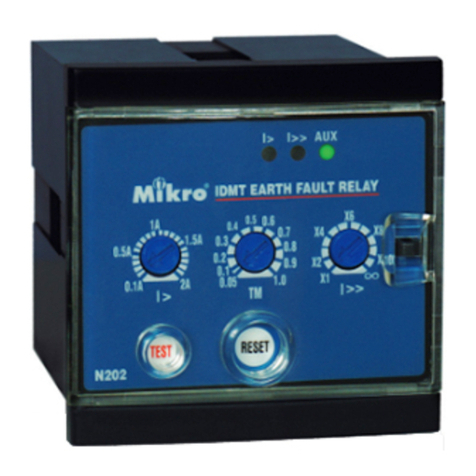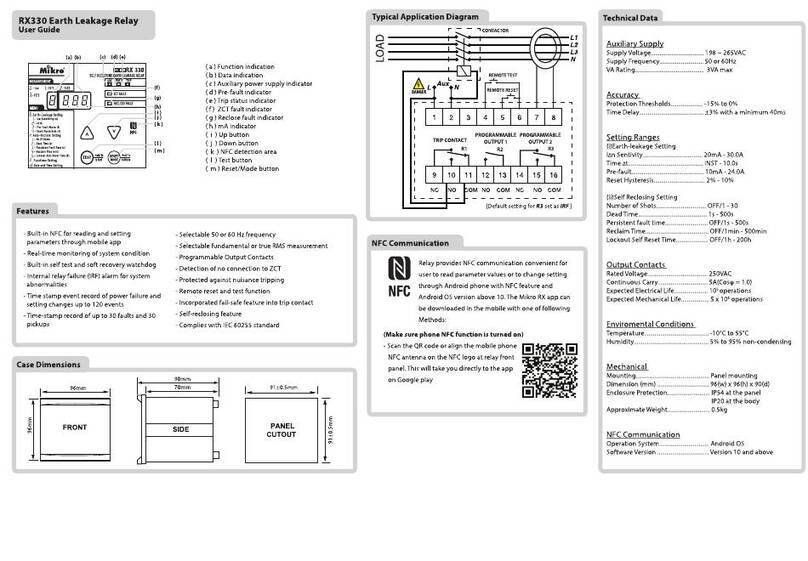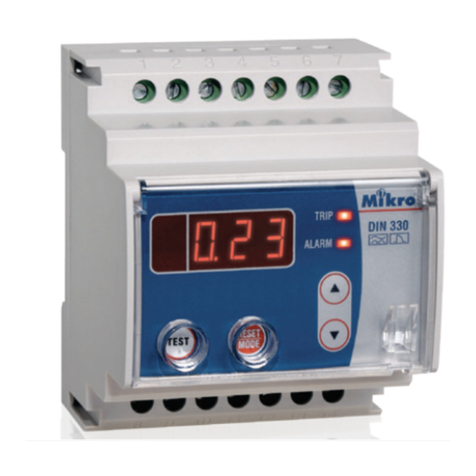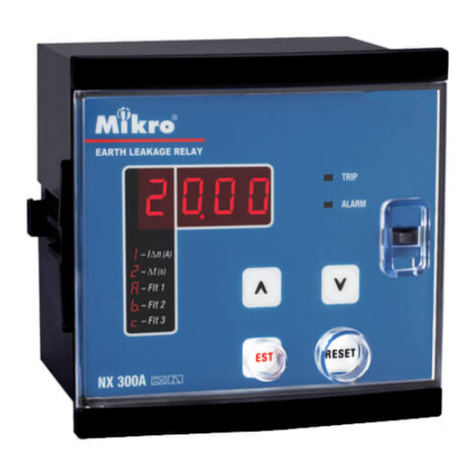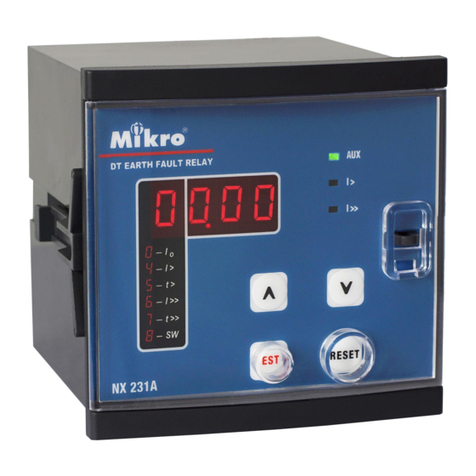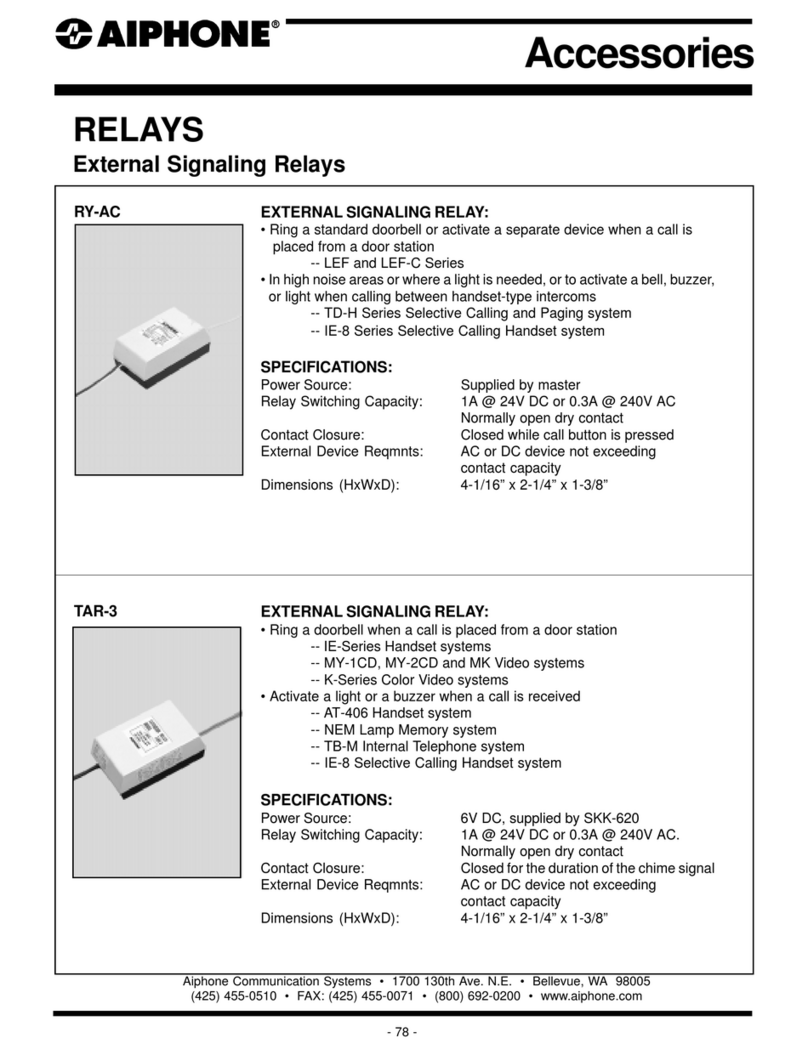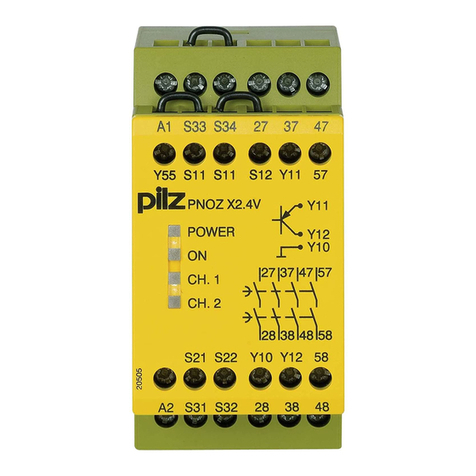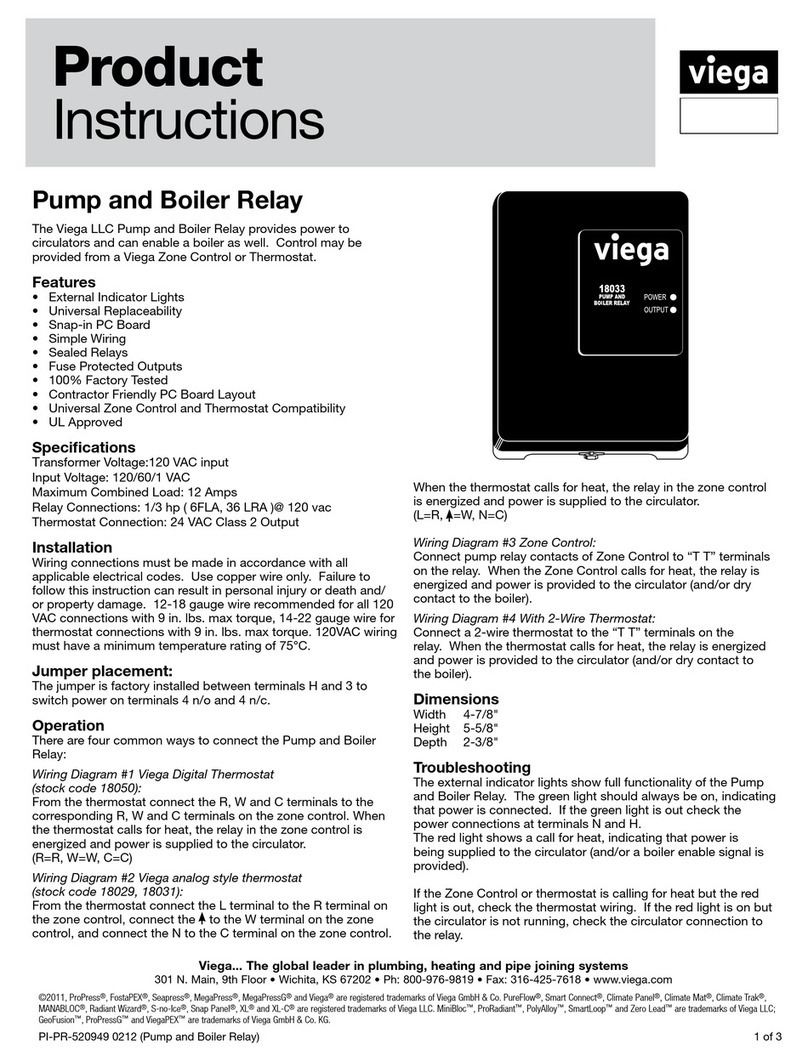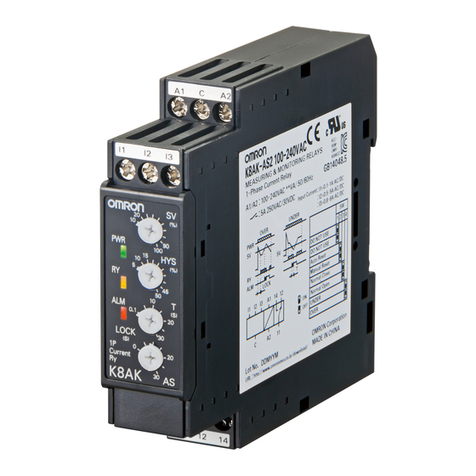
Table 2: FUNCTION Code
3. PUSH-BUTTONS OPERATION
a) Trip test
b) Trip reset
c) View setting
f) Program setting
Only function codes from 4 to 8 can be programmed.
Step 2:
Step 3:
Step 4:
4. OUTPUT CONTACTS
(i) CONTACT R1 - linked to trip signal.
The output contact can be programmed to be either
auto reset type or manual reset type.
For auto reset type, the contact remain activated until
the fault current is removed.
For manual reset type, the contact remain activated.
Use the UP or DOWN key to select the
desired value.
To save the selected value, press the
UP and DOWN key simultaneously again.
It will exit the programming mode with the
data digits displaying new setting.
To exit programming mode without saving the
selected setting, press the RESET key once.
Figure 1: Scroll sequence
5. SOFT SWITCHES
TheNX232A incorporates 5 soft switches for system
configuration. When the function digit shows “8”, the
relay is in soft switch setting mode.
Table 3: Soft switch setting
SW
1
3
4
SVL
00
01
00
01
02
03
00
01
System configuration
Low-set normal inverse curve 3/10.
Low-set long time inverse curve.
Low-set very inverse curve.
Low-set extremely inverse curve.
High-set disabled.
High-set enabled.
“ ”
switch number (SW)
switch value (SVL)
04
Low-set definite time.
200
01
10
11
Contact R2 linked to trip signal auto reset type.
(i) CONTACT R2 - linked to trip or start signal.
Contact R1 linked to trip signal auto reset type.
Contact R1 linked to trip signal manual reset type.
Contact R2 linked to trip signal manual reset type.
Contact R2 linked to start signal auto reset type.
Contact R2 linked to start signal manual reset type.
Low-set normal inverse curve 1.3/10.
05
Figure 4: IDMT Long time Inverse Curve
Figure 3: IDMT Very Inverse Curve
Figure 5: IDMT Extremely Inverse Curve
1.0
0.9
0.8
0.7
0.6
0.5
0.4
0.3
0.2
0.1
0.05
Figure 2: IDMT Normal Inverse Curve 3/10
Figure 6: IDMT Normal Inverse Curve 1.3/10
Indicator
FUNCTION DP DATA
0 off Earth-fault current
t blink Last trip elapsed time
0 blink Previous tripped current
4 off Low-set current setting
5 off Low-set time multiplier/delay
setting
6 off High-set current setting
7 off High-set time delay setting
8 off Soft switch setting
The function LED shows "t." and time elapsed after
last trip in day ("d"), hour ("h") and minute ("n"). If
more than 99 days, the display shows "99d" and
"oUr"
e) Trip Current Record
Step 1: Press RESET key until the function digit
shows required function.
Press the "UP" and "DOWN" key
simultaneously to enter programming
mode. The Data digit blinks to indicate the
relay is in programming mode.
5 50 Network frequency 50 Hz
60 Network frequency 60 Hz
Display blinks “T.E.S.T.”, indicators I> and I>> after
test tripped.
Display off Mode
To toggle display off mode, press “RESET” for 10
seconds. When display off mode enabled, the display
will switch off after 6 minutes if no key is pressed.
d) Last Trip Elapsed Time
The NX232A has two sets of output contact:
By default the most recent ("1") trip current is shown.
Press "UP" or "DOWN" key to show the previous
("2") and oldest ("3") trip current.
When the relay is not under tripped condition,
pressing the “RESET” key will scroll through the
various functions.
Press the “RESET” key to reset the relay when
tripped
Press and hold the “TEST” key for 3.5 seconds to
stimulate a trip.
